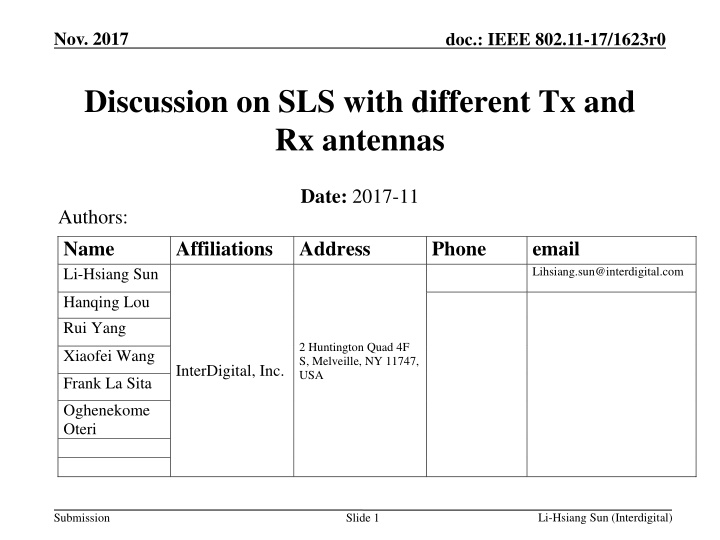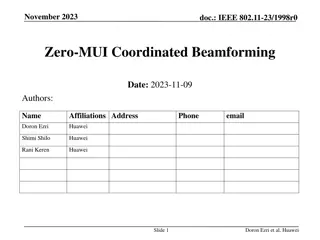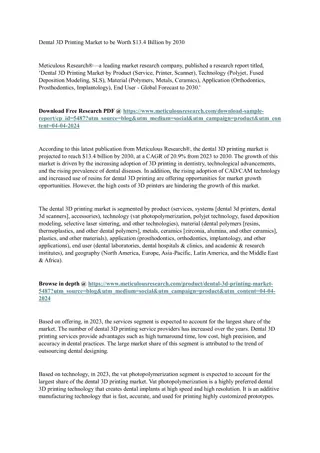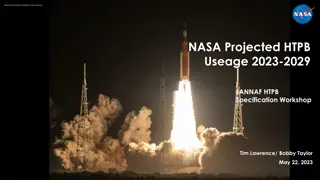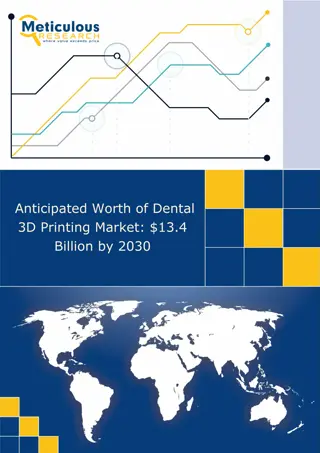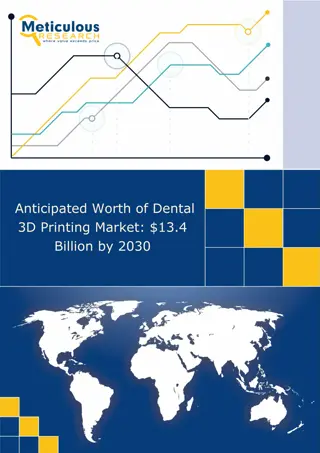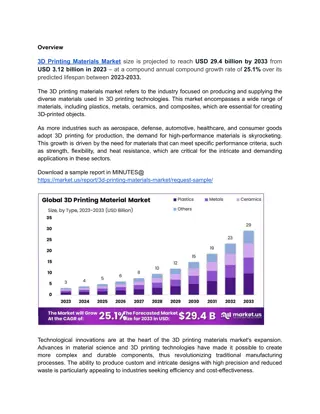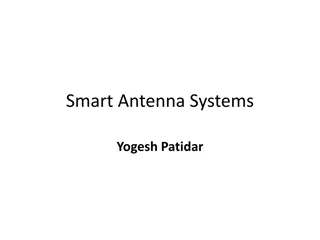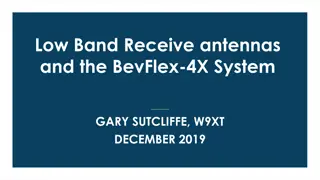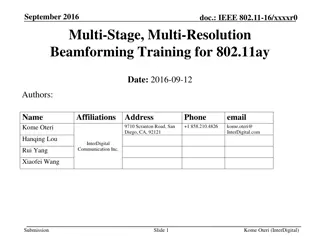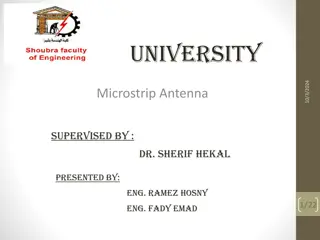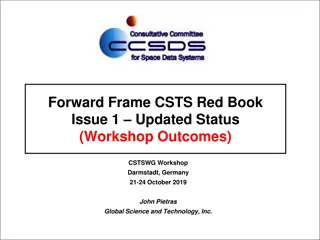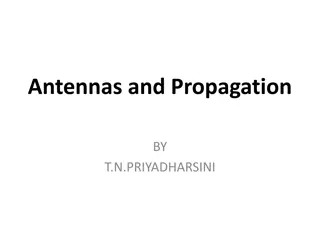Discussion on SLS with Different Tx and Rx Antennas
This document, dated November 2017 and labeled IEEE 802.11-17/1623r0, contains a discussion on Spatial Length Streams (SLS) in wireless communication systems when using varying numbers of transmitting and receiving antennas. The author, Li-Hsiang Sun, explores the implications and considerations of SLS with different configurations of Tx and Rx antennas.
Download Presentation

Please find below an Image/Link to download the presentation.
The content on the website is provided AS IS for your information and personal use only. It may not be sold, licensed, or shared on other websites without obtaining consent from the author.If you encounter any issues during the download, it is possible that the publisher has removed the file from their server.
You are allowed to download the files provided on this website for personal or commercial use, subject to the condition that they are used lawfully. All files are the property of their respective owners.
The content on the website is provided AS IS for your information and personal use only. It may not be sold, licensed, or shared on other websites without obtaining consent from the author.
E N D
Presentation Transcript
Nov. 2017 doc.: IEEE 802.11-17/1623r0 Discussion on SLS with different Tx and Rx antennas Date: 2017-11 Authors: Name Li-Hsiang Sun Affiliations Address Phone email Lihsiang.sun@interdigital.com Hanqing Lou Rui Yang 2 Huntington Quad 4F S, Melveille, NY 11747, USA Xiaofei Wang InterDigital, Inc. Frank La Sita Oghenekome Oteri Li-Hsiang Sun (Interdigital) Submission Slide 1
Nov. 2017 doc.: IEEE 802.11-17/1623r0 Background In 802.11-2016 10.36.5: Within a CBAP a STA with multiple DMG antennas should use only one DMG antenna in its frame transmission, CCA and frame reception, except if it is the initiator or responder in an SLS (10.38). The algorithm to select a DMG antenna and switch the active DMG antenna is implementation dependent. Within CBAPs a STA that changed to a different DMG antenna in order to transmit should perform CCA on that DMG antenna until a frame is detected by which it can set its NAV, or until a period of time equal to the dot11DMGNavSync has transpired, whichever is earlier. When a STA operates in SISO mode, the above requirement makes it difficult for a STA transmitting and receiving using different antennas Li-Hsiang Sun (Interdigital) Submission Slide 2
Nov. 2017 doc.: IEEE 802.11-17/1623r0 Background SSW- FBCK N 1 0 initiator Selected responder CDOWN Selected Initiator CDOWN SSW- Ack M 1 0 responder Based on of reception at responder ant 1 Corresponds to responder ant 2 11ay allows STA to receive TXSS with multiple antennas The CDOWN fed back to the initiator from the responder doesn't indicate which rx antenna the responder used to receive the selected initiator sector, e.g., Antenna 1 In SSW FBCK, the initiator may select a responder tx sector which belongs to a different responder antenna, e.g., Antenna 2 Li-Hsiang Sun (Interdigital) Submission Slide 3
Nov. 2017 doc.: IEEE 802.11-17/1623r0 Initiator avoids having different Tx/Rx Antennas SSW- FBCK N 1 0 initiator Selected responder CDOWN Selected Initiator CDOWN SSW- Ack M 1 0 responder Initiator Responder Based on of reception at responder ant 1 Corresponds to responder ant 2 Responder reported in R-TXSS phase Initiator selects responder link based on the feedback from RSS Initiator link: From I to R using ant 1 to ant 1? Before responder link transmission, the responder may perform CCA using ant 1, but it will transmit using ant 2, which may create interference Ant 1 Ant 1 Ant 2 Best SNR responder link Ant 2 Li-Hsiang Sun (Interdigital) Submission Slide 4
Nov. 2017 doc.: IEEE 802.11-17/1623r0 Suggested improvement Allow responder to switch antenna between SSW FBCK and SSW Ack. Add a requirement that the initiator sector indicated in SSW- Ack must belong to the same initiator DMG antenna which transmits SSW FBCK Li-Hsiang Sun (Interdigital) Submission Slide 5
Nov. 2017 doc.: IEEE 802.11-17/1623r0 Example Initiator CDOWN=0, and CDOWN=1 belong to the same RF chain Transmitted using antenna and sector corresponding to CDOWN=1 SSW- FBCK Sector select=1 N 1 0 initiator Reserved=0 Sector select=1 CDOWN=3 Reserved=1 Sector select=1 CDOWN=2 Reserved=0 Sector select=1 CDOWN=1 Reserved=0 Sector select=1 CDOWN=0 Sector select=0 SSW- ACK 3 2 1 0 responder Transmitted using antenna 2 and sector corresponding to CDOWN=1 Observing CDOWN=1 measured by responder Rx antenna 1 the best Transmitted using Tx2 Transmitted using Tx1 Responder switches from antenna 1 to antenna 2 Li-Hsiang Sun (Interdigital) Submission Slide 6
Nov. 2017 doc.: IEEE 802.11-17/1623r0 Straw Poll Do you agree to include the changes described in 11-17- 1622-01-00ay? Li-Hsiang Sun (Interdigital) Submission Slide 7
